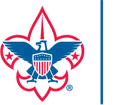First Aid
First Aid: Be Prepared for Anything
First aid is one of the most important skills every Scout should master. Whether you’re on a camping trip, hiking, or just spending time outdoors, knowing how to handle injuries and emergencies can save lives. Scouts learn how to treat minor cuts and scrapes, recognize more serious injuries, and provide aid until professional help arrives.
Basic First Aid Kit
Every Scout should carry a well-stocked first aid kit on all outings. A basic kit includes bandages, antiseptic wipes, adhesive tape, gauze pads, tweezers, and gloves. Additional items like a triangular bandage, CPR mask, and an emergency blanket can also come in handy. Knowing how to use each item is just as important as having them.
_Suggested Pictures:
- A fully stocked first aid kit with items laid out
- A Scout demonstrating the contents of a first aid kit_
Youtube Video: “What to Include in a Basic First Aid Kit”
Treating Minor Cuts and Scrapes
Cuts and scrapes are common injuries when you’re spending time outdoors. The first step in treating a minor wound is to clean it thoroughly with water and antiseptic wipes, then cover it with a bandage to prevent infection. Scouts are taught the importance of cleanliness to avoid complications.
_Suggested Pictures:
- A Scout cleaning a small wound
- A close-up of applying a bandage_
Youtube Video: “How to Treat Minor Cuts and Scrapes”
Recognizing and Treating Shock
Shock is a serious condition that can occur after a severe injury or medical emergency, like a large wound or broken bone. Signs of shock include pale, clammy skin, confusion, and a rapid heartbeat. Scouts are trained to keep the victim calm, lay them down, elevate their feet, and monitor their breathing until professional help arrives.
_Suggested Pictures:
- Scouts assisting a person showing signs of shock
- A diagram of symptoms and treatment steps for shock_
Youtube Video: “Recognizing and Treating Shock in First Aid”
Sprains and Broken Bones
Outdoor activities like hiking or running can sometimes lead to twisted ankles or even broken bones. Scouts learn how to immobilize a sprain or fracture using a splint, how to apply a cold compress, and when it’s necessary to call for help. Keeping the injured person comfortable and preventing further injury is key.
_Suggested Pictures:
- A Scout applying a splint to an injured person
- A Scout wrapping a cold compress around a sprained ankle_
Youtube Video: “How to Treat Sprains and Broken Bones”
CPR and Rescue Breathing
One of the most critical first aid skills is CPR (Cardiopulmonary Resuscitation). In cases where someone isn’t breathing, performing CPR can be the difference between life and death. Scouts are trained in chest compressions and rescue breathing techniques to keep the blood flowing and oxygen circulating until emergency services arrive.
_Suggested Pictures:
- A Scout practicing CPR on a dummy
- A step-by-step guide to performing CPR_
Youtube Video: “CPR Training for Scouts: Step-by-Step”
Heat Exhaustion and Hypothermia
Scouts often find themselves exposed to different weather conditions, making it essential to recognize signs of heat exhaustion and hypothermia. Heat exhaustion occurs after too much exposure to hot weather, and signs include dizziness, nausea, and excessive sweating. Hypothermia happens when the body loses heat too quickly and symptoms include shivering, confusion, and exhaustion. Scouts learn to cool down victims of heat exhaustion and warm up those affected by hypothermia through proper hydration, clothing, and shelter.
_Suggested Pictures:
- A Scout providing water and shade to someone with heat exhaustion
- A Scout helping a hypothermic person into warm clothes_
Youtube Video: “Heat Exhaustion vs. Hypothermia: How to Treat Both”
Choking and Rescue Techniques
Choking can happen unexpectedly, and knowing the proper rescue techniques is critical. Scouts are taught how to recognize choking symptoms and how to perform the Heimlich maneuver to dislodge the object. This life-saving skill is simple but can be crucial in emergency situations.
_Suggested Pictures:
- A Scout performing the Heimlich maneuver on a fellow Scout
- A step-by-step illustration of the Heimlich technique_
Youtube Video: “How to Save Someone from Choking: The Heimlich Maneuver”
Snake Bites and Insect Stings
While spending time in nature, it’s possible to encounter snakes or insects that pose a danger. Knowing how to treat bites and stings is essential for preventing allergic reactions and infections. Scouts learn to keep the victim calm, clean the area, and when to seek medical help for more severe bites or stings.
_Suggested Pictures:
- A Scout treating an insect sting with a first aid kit
- A guide on how to recognize and treat a snake bite_
Youtube Video: “First Aid for Snake Bites and Insect Stings”
Burns and Sunburns
Burns, whether from campfires or excessive sun exposure, are another common injury in the outdoors. Scouts learn how to treat burns by cooling the affected area with water, applying clean bandages, and avoiding infection. For severe burns, seeking medical help is a priority, while sunburns can be prevented with sunscreen and protective clothing.
_Suggested Pictures:
- A Scout treating a burn with cool water
- A Scout applying sunscreen during outdoor activities_
Youtube Video: “First Aid for Burns and Sunburn Prevention”
Mastering first aid skills ensures that Scouts are ready to handle any situation, from minor scrapes to serious emergencies. Be prepared, stay calm, and always carry your first aid kit! Watch the videos above and explore the resources to dive deeper into each of these essential first aid skills.


